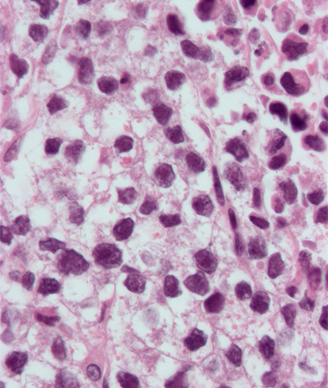RPLND May Reduce Need for Chemo/Radiation for Testicular Seminoma
Treatment with retroperitoneal lymph node dissection for testicular seminoma with limited retroperitoneal lymphadenopathy is associated with low long-term morbidity.
Retroperitoneal lymph node dissection (RPLND) for patients who had testicular seminoma with clinically low-volume retroperitoneal lymphadenopathy correlated with low long-term morbidity and could represent a treatment option that allows for a cure without long-term toxicity related to chemotherapy or radiation, according to findings from the phase 2 SEMS trial (NCT02537548).
"The major advantage for RPLND, which overshadows other therapeutic approaches and any potential decrement in [RFS], is the opportunity to avoid chemotherapy or [radiotherapy],” according to the authors of the phase 2 SEMS trial.

With a median follow-up of 33 months (interquartile range [IQR], 12.0-61.6), disease recurred in 12 patients who underwent RPLND, resulting in an overall recurrence rate of 22% with a median time to recurrence of 10.2 months (range, 7.3-31.6). The 2-year recurrence free survival (RFS) rate was 81% and the 2-year treatment-free survival (TFS) rate was 83%.
Of the patients who developed disease recurrence, 10 received chemotherapy and 2 others underwent additional surgery. At final follow-up, all patients who had disease recurrence were disease free and the 2-year overall survival (OS) rate was 100%.
Overall, 4 patients experienced 5 grade 1 to 3 complications, and long-term complications occurred in 4 patients. One patient had an asymptomatic incisional hernia detected radiographically that was not treated at the time of final follow-up. Moreover, 3 patients underwent non–nerve-sparing surgery experienced anejaculation.
“The major advantage for RPLND, which overshadows other therapeutic approaches and any potential decrement in [RFS], is the opportunity to avoid chemotherapy or [radiotherapy],” the study authors stated. “This potential…reduction in the number of patients receiving chemotherapy will have a significant impact when extrapolated for prolonged survivorship.”
Investigators of the single-arm, prospective phase 2 SEMS trial assessed the efficacy of RPLND in patients with testicular seminoma. Across 12 treatment sites in the United States and Canada, certified surgeons who performed at least 8 open RPLND surgeries in the year before study initiation or at least 25 open RPLND surgeries within the 3 years prior to study initiation performed RPLND surgeries for the trial.
The primary end point of the analysis was 2-year RFS. Follow-ups occurred every 4 months within 1 year following surgery, every 6 months within 2 to 3 years, and then annually for up to 5 years to assess patients for complication rates, pathologic up/downstaging, recurrence patterns, adjuvant therapies, and TFS.
Adult patients with pure testicular seminoma and isolated retroperitoneal lymphadenopathy 1 to 3 cm in greatest dimension following radical orchiectomy were eligible for inclusion in the trial. Additional eligibility criteria included having an ECOG performance status of 0 or 1, serum tumor marker elevation at a maximum of 1.5 times the upper limit of normal, and evidence of regional adenopathy only.
Of 55 enrolled patients, the median age was 34 years (range, 20-64), and the median size of the first enlarged lymph node size was 1.6 cm (IQR, 1.0-3.5). RPLND pathology identified a median largest positive lymph node size of 2.3 cm (IQR, 0.3-12.30). In terms of pathological nodal staging, 16% of patients had pN0 disease, 22% had pN1 disease, 56% had pN2 disease, and 5% had pN3 disease.
In a post-hoc analysis, the 2-year RFS rate was 86% (95% CI, 76%-97%) and 64% (95% CI, 41%-99%) for those with clinical N1 and N2 disease, respectively, reflecting significantly differing survival probabilities (P = .039). In terms of pathologic stages, the 2-year RFS rates were 100% for pN0 disease, 92% (95% CI, 77%-100%) for pN1 disease, 74% (95% CI, 60%-100%) for pN2 disease, and 67% (95% CI, 30%-100%) for pN3 disease. Additionally, survival probabilities based on pathologic stages were not significantly different (P = .36).
Patients with abdominal imaging less than 4 weeks before undergoing RPLND had a recurrence rate of 54% vs 12% for those who had more recent imaging (P = .0037).
Reference
Daneshmand S, Cary C, Masterson T, et al. Surgery in early metastatic seminoma: a phase 2 trial of retroperitoneal lymph node dissection for testicular seminoma with limited retroperitoneal lymphadenopathy. J Clin Oncol. Published online March 13, 2023. doi:10.1200/JCO.22.00624
Evaluation and Management of Testicular Cancer After Late Relapse
The clinical quandary by Langer et al discusses a contralateral late relapse of the original right nonseminomatous germ cell tumors.